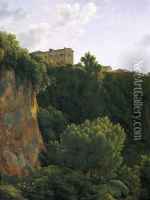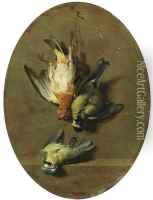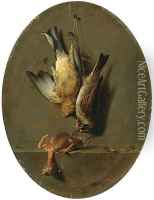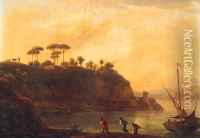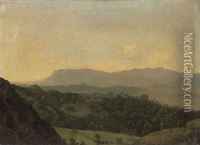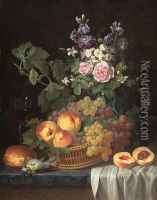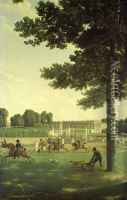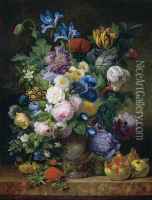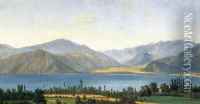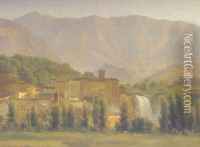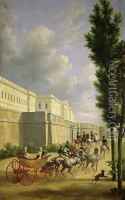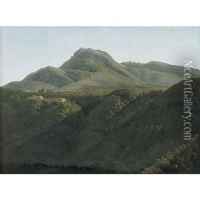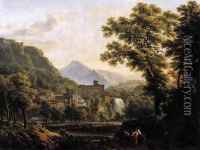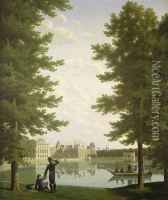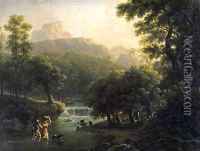Jean-Joseph-Xavier Bidauld Paintings
Jean-Joseph-Xavier Bidauld was a French painter born on April 10, 1758, in Carpentras, France. He specialized in landscape painting, and his works are characterized by their meticulous detail and serene portrayal of nature. Bidauld was initially trained by his older brother, who was also a painter, before moving to Paris to further his education in the arts. There, he studied under the landscape painter Pierre-Henri de Valenciennes, who was a proponent of the classical landscape tradition.
During the 1780s, Bidauld traveled extensively throughout Italy, where he was profoundly influenced by the Italian landscape. He spent significant time in Rome, which was a hub for artists at the time. The Italian countryside, particularly the regions of Campania and Latium, served as a major inspiration for his work. After returning to France, he became known for his Italianate landscapes, which often depicted the countryside bathed in a warm, golden light.
Bidauld's career progressed steadily, and he gained recognition from various art institutions. In 1789, he was elected a member of the Académie Royale de Peinture et de Sculpture. His work was regularly exhibited at the Paris Salon, an official art exhibition of the Académie des Beaux-Arts, where he received a gold medal in 1817.
Bidauld's style is often associated with Neoclassicism, as he emphasized clarity, order, and the idealized beauty of nature. However, he also incorporated elements of Romanticism, particularly in his emphasis on the emotional aspects of the landscape.
Despite the political turmoil of the French Revolution and the Napoleonic Wars, Bidauld managed to maintain a successful career. His patrons included members of the French nobility and, after the Bourbon Restoration, King Louis XVIII himself.
Bidauld continued to paint and exhibit his work into his old age. He passed away on October 20, 1846, in Montmorency, near Paris. His legacy includes a body of work that captures the tranquility and picturesque quality of the landscapes he so loved, and he is remembered as a significant figure in the history of French landscape painting.
